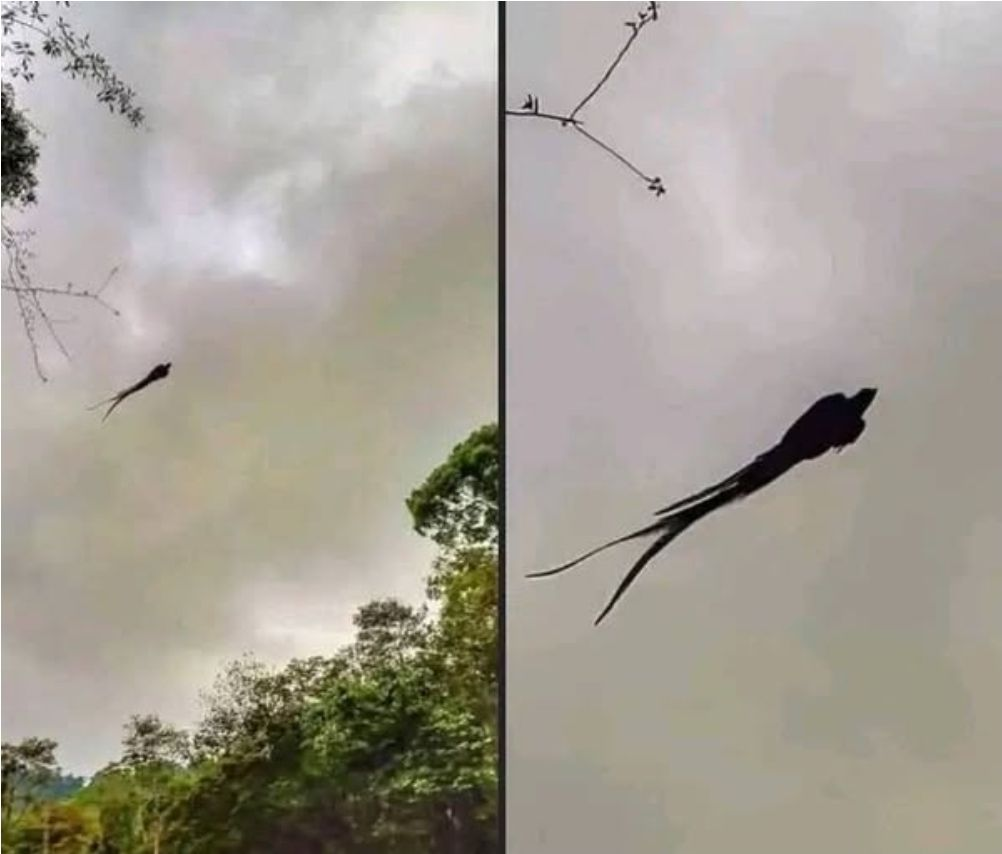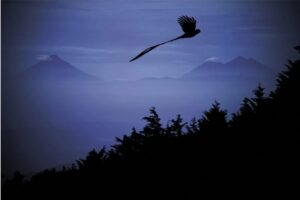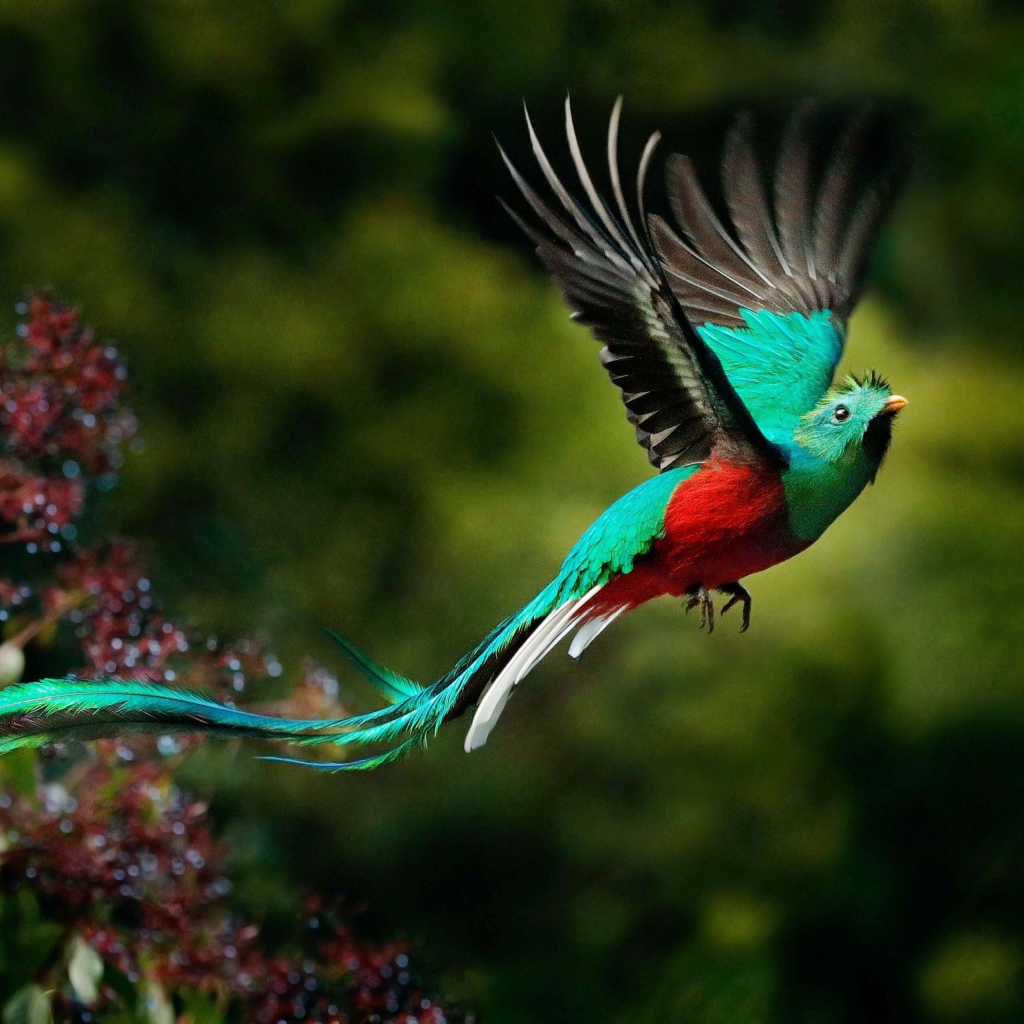Ever seen something so beautiful it almost felt unreal? That’s the magic of the quetzal. This dazzling bird, long worshipped in Mesoamerican culture, recently turned heads across the internet when someone captured its silhouette soaring through the skies of Chiapas, Mexico.
It wasn’t CGI. It wasn’t a digital illusion. It was raw, real nature—majestic, vibrant, and mysterious. A fleeting moment of wonder immortalized in a photo. So let’s talk about this mythical creature, why it matters, and why people are calling it the “Dementor of the jungle.”

A Photograph That Captivated Millions
It all started in Frontera Corozal, a remote border region of Chiapas nestled near Guatemala. On April 12th, a local photographer managed to snap the quetzal in mid-flight—its long tail trailing behind like an ethereal ribbon, wings spread wide, cutting through the mist like something out of a fantasy novel.
To many, it looked like a scene from Harry Potter—a “Dementor” gliding through the sky. But what they were witnessing was even more magical: one of the most elusive and endangered birds on Earth captured mid-flight in its natural habitat.
The image exploded online, gathering likes, shares, and awestruck comments. But beyond the buzz, it reignited a conversation about the quetzal’s fragile existence.
Video: Quetzal – The Bird That Will Make You Say “Wow!
The Quetzal: More Than Just a Pretty Bird
Let’s get one thing clear—the quetzal isn’t just any bird. It’s a cultural icon. To the ancient Mayans, it was known as Q’uk’umatz—“the feathered serpent.” The Aztecs worshipped it as a symbol of Quetzalcoatl, a deity tied to wind, sky, and knowledge.
Its image was sacred. So sacred, in fact, that royalty and priests wore its feathers during ceremonies. But here’s the catch: the birds were never killed for their plumage. Their feathers were collected respectfully, reinforcing the quetzal’s role as a symbol of freedom and divinity.
What Makes the Quetzal So Mesmerizing?

Let’s talk appearance. The male quetzal is a walking work of art. With emerald-green feathers, a bright red chest, a sun-yellow beak, and a sweeping tail that can reach over a meter long—it’s practically glowing. The feathers shimmer in different shades depending on how the light hits them, giving the quetzal an almost supernatural look.
The female? She’s more understated—muted greens, grays, and lacking the long tail. Still elegant, just in a quieter way.
But beauty aside, this bird’s charm lies in its spirit. Quetzals are monogamous, loyal, and fiercely independent. They simply can’t survive in captivity. In fact, many refuse to eat if caged. They’d rather perish than lose their freedom—how poetic is that?
Vanishing Skies: The Quetzal’s Endangered Existence
Video: Quetzal Facts: BEAUTIFUL BIRDS | Animal Fact Files
Here’s where the story turns bittersweet.
The quetzal’s preferred home is the cloud forest—a lush, mist-covered haven at high elevations. Unfortunately, these habitats are disappearing at an alarming rate due to deforestation and human encroachment. Add illegal pet trade and natural predators into the mix, and the quetzal population has dwindled dramatically.
Even though conservationists have managed to rescue some and reintroduce them to the wild, the threat remains real. These birds don’t just need space—they need the right space. And sadly, that space is shrinking.
From Ancient Temples to Instagram Posts: The Bird That Bridges Worlds

There’s something poetic about the fact that a bird once reserved for kings and gods now captures hearts through smartphones and viral images. This new-age attention could be exactly what the quetzal needs.
It reminds us that the world is still filled with wonder—and that we, as a modern audience, have the power to protect it.
Photographers, wildlife lovers, and eco-activists are using platforms like Instagram and TikTok not just to share beautiful images, but to educate and advocate for species like the quetzal. Every like, share, and comment becomes a digital footprint in the fight for conservation.
A Flight That’s More Than Just a Flight
When the quetzal takes flight, it doesn’t just fly. It glides with a grace that almost feels spiritual. Watching it weave through the fog of a mountain forest is like watching a prayer unfold. It’s no wonder ancient civilizations thought of it as a divine messenger.
In a time where everything moves fast—scroll, swipe, click—the quetzal reminds us to pause. To witness. To breathe. It’s not just a bird. It’s a living symbol of beauty, fragility, and freedom.
Why the World Needs the Quetzal

The quetzal’s story isn’t just about feathers and folklore. It’s about what we choose to protect. If we let the cloud forests disappear, we don’t just lose a bird—we lose a part of ourselves.
The quetzal asks us to believe in magic again. To see nature not as something to conquer, but something to cherish. It tells us that ancient wisdom still has relevance, that stories told under jungle canopies matter just as much as tweets and headlines.
Conclusion: A Winged Reminder of What Still Matters
The quetzal’s flight across the skies of Chiapas wasn’t just a stunning photograph—it was a call to action. A visual nudge to remember that the most beautiful parts of our world are often the most endangered.
This bird, once sacred to kings, still rules hearts today. Not because we control it—but because we can’t.
So next time you see a flash of green against the clouds, or a photo so magical it feels made-up—remember the quetzal. Remember that the world still holds mystery. And it’s up to us to protect it.


